The Guppyfriend
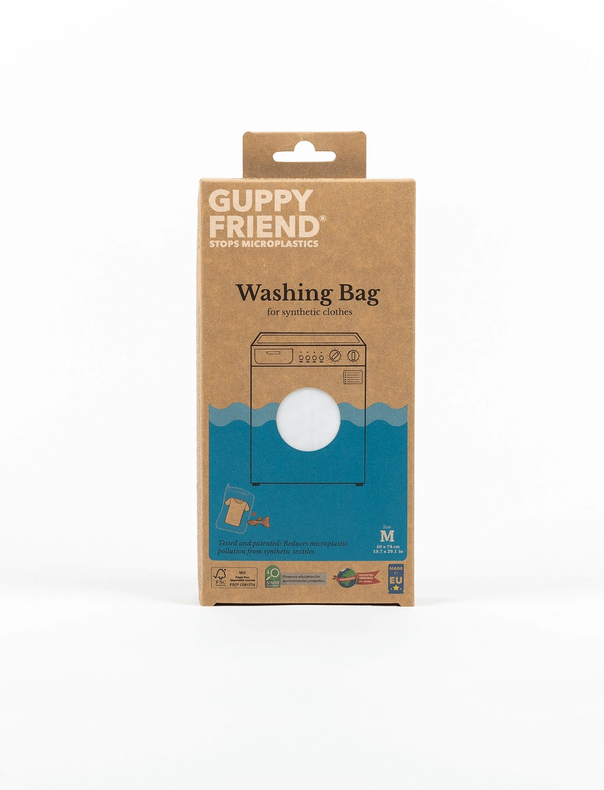
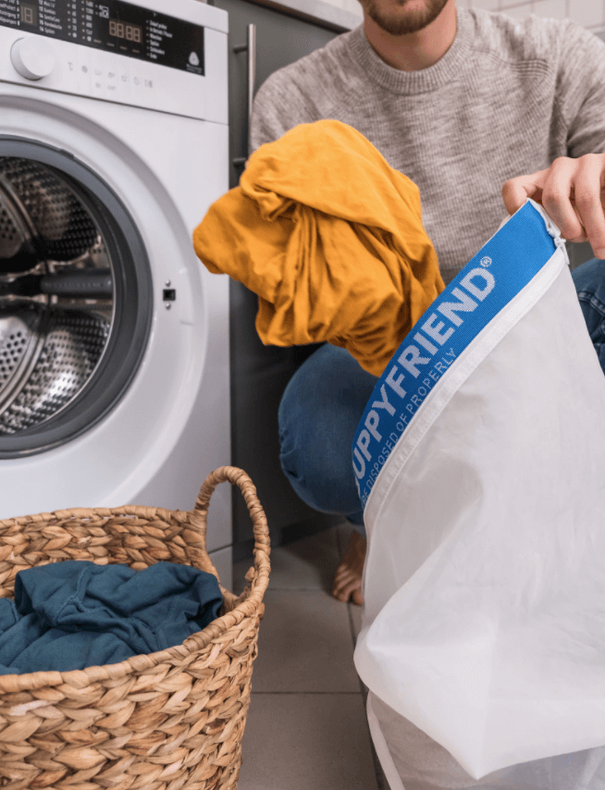
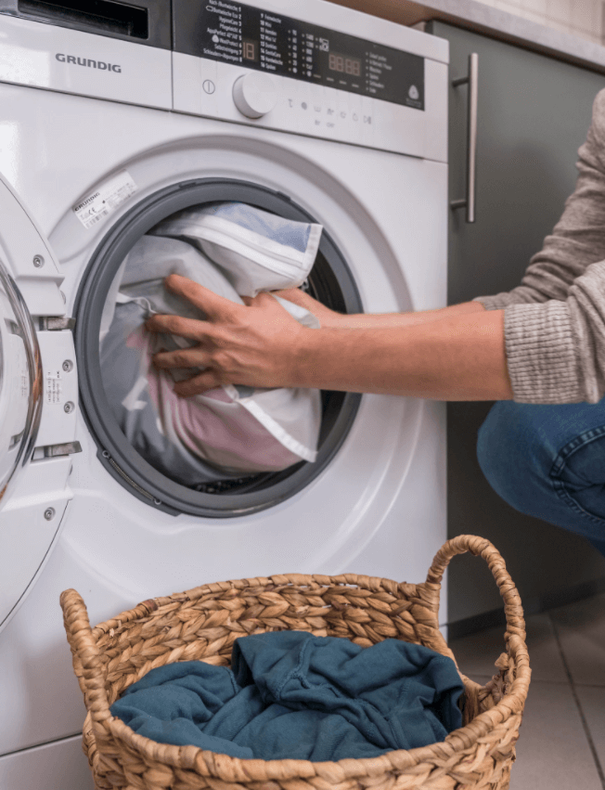
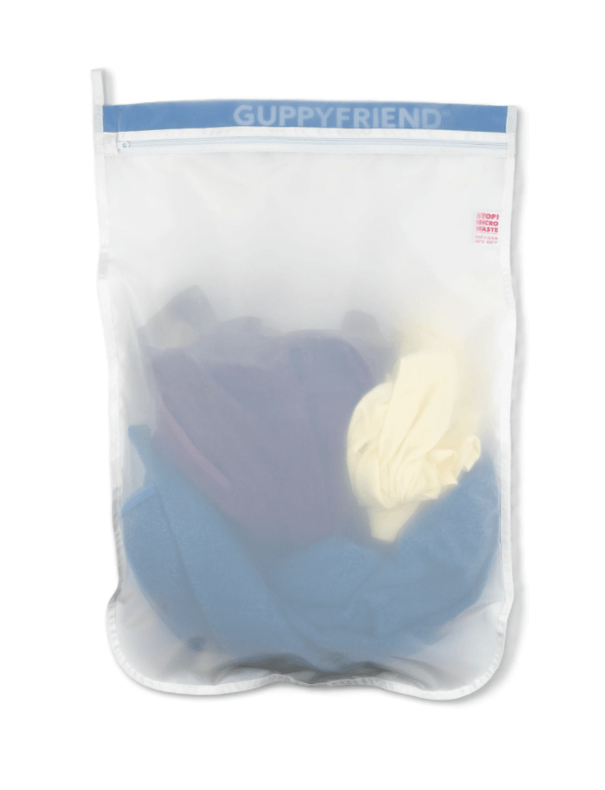
When washing synthetic fibers, especially fleece products, we do serious harm to our environment. The GUPPYFRIEND Washing Bag is the first practical way to prevent microfibers from entering into rivers and oceans.
When washing synthetic fibers, especially fleece products, we do serious harm to our environment. The GUPPYFRIEND Washing Bag is the first practical way to prevent microfibers from entering into rivers and oceans.
- Material+
- Use and care+
- Environment and footprint+
- Pricing and production+
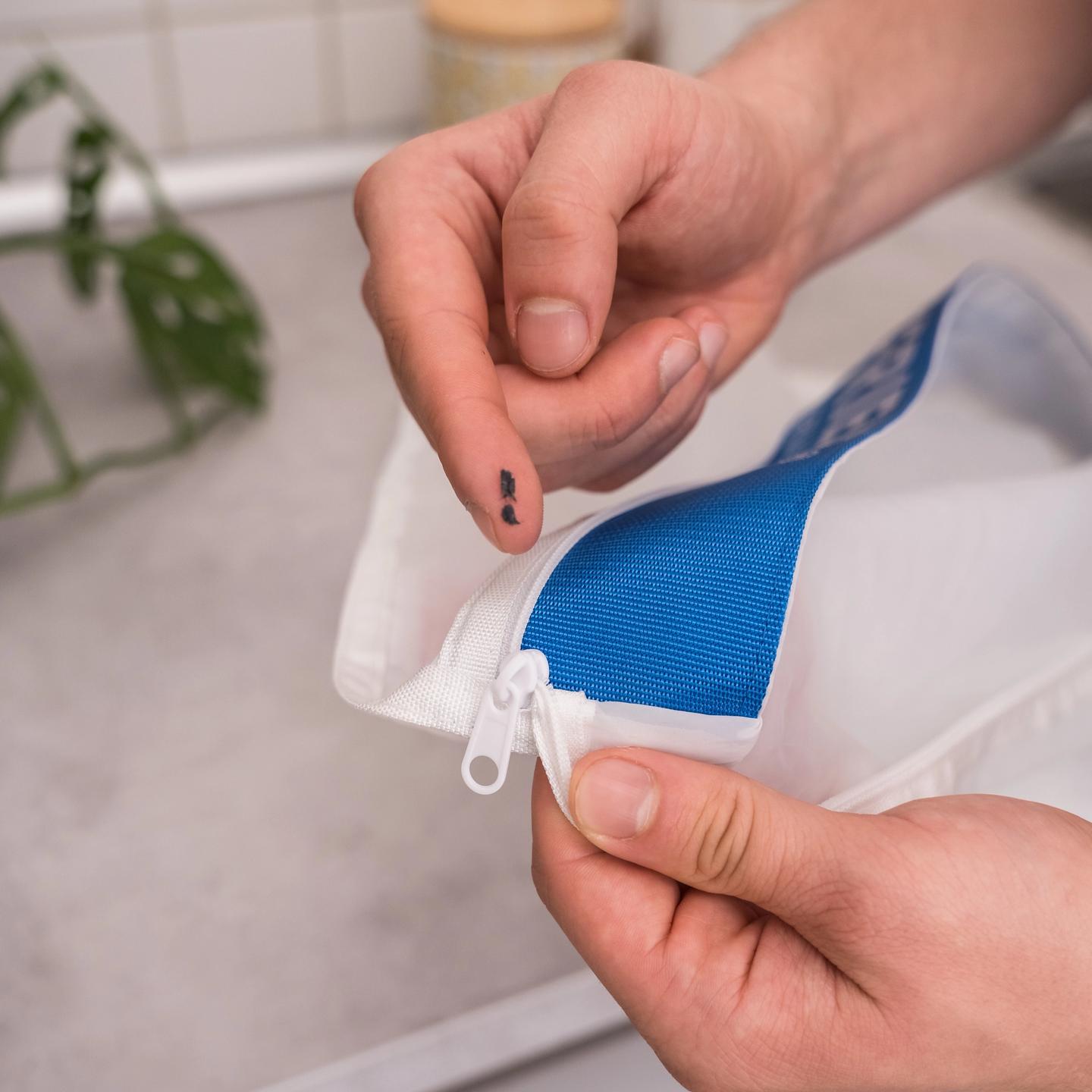
The issue: Synthetic fabrics pollute the environment
When we think about the plastic problem, we often imagine plastic bottles and bags, but invisible micro-plastic is also a big part of the issue. A considerable amount of micro-plastic comes from fabric. Each time we wash our clothes, countless plastic fibers from synthetic garments are washed out into rivers and oceans. These fibers are so tiny that treatment plants cannot effectively filter them out. When these bandits make their way out into nature, they don't decompose and have a tendency to attract bacteria. When they then are eaten by organisms, they contribute to infections, blockage of alimentary tracts, reproduction problems and starvation – issues that make their way all the way up the food chain to you and me.
The solution: GUPPYFRIEND
The solution is really to probably stop making clothes that contain synthetic fibers. But as long as we have them in our closets, we need solutions that minimize the damage. GUPPYFRIEND stops these micro fibers from getting out into our sewers and make sure that you and I can start cleaning up our oceans and rivers.
GUPPYFRIEND is developed and made by the Germany company Langbrett. All profits made through production and sales of the prduct are reinvested in activities that help fight the micro-plastic problem.
P.S. Northern Playground does not make any profits selling GUPPYFRIEND.

The bag does two things:
1. It protects your clothes (also wool and cotton clothing), so less textile fabrics are damaged when washed, and 2. the fibers that do fall off the garment are absorbed by the bag. Once and a while you can easily remove the micro fibers from the bag and put them in the trash.
All textiles release fibers when washed, but it is the synthetic materials (polyester, acrylic, nylon, etc.) that release harmful fibers.
You can also put wool and cotton in the bag. Natural textiles also lose fibers. They aren't harmful for the environment because they are easily decomposed, but the garment itself will have a shorter life if it loses many fibers. The bag protects the garment, reducing wear and tear, making sure that you can use the garment longer. This in itself is one of the sustainability goals of the GUPPYFRIEND.
Instructions:
1. Put the clothes in the bag. Make sure the bag isn't more than half full.
2. Close the bag and wash like you normally would.
3. Remove the wet clothes after washing.
4. Remove the micro fibers that collect in the bag and through them in the plastic recycling. The fibers should be easy to see in the bag and you can easily use a finger to remove them.

STORE AND MICROFACTORY
Our store is not your typical shop. Sure, we sell clothes and make money from it, but can we do everything the opposite of what typical clothing stores do? Our goal is just as much about opening minds and showing that it's possible to do things in a completely different way, with a totally different footprint.
Visit us at Grünerløkka in Oslo (where Markveien crosses Korsgata) to try on clothes, share your input on new products, repair worn garments, see how your products are made, or just have a chat with one of us. More information about the store here. Read more about our store concept here.
Process
This product is now in stock and ready to be worn on your next adventure.
Discussion
To make sure we make clothing that can last a lifetime, we need your feedback. In our Community you can contribute in the development of new and existing products. Have thoughts on anything we should do different, a cool story or maybe just a question about the product? Join our Community and the discussion below!
